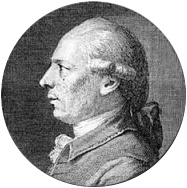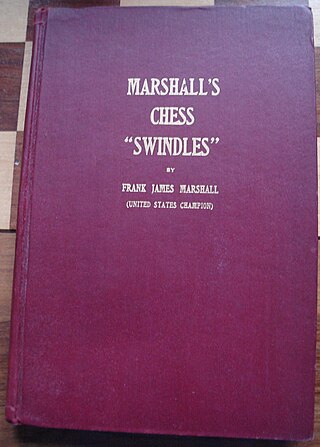Chess strategy is the aspect of chess play concerned with evaluation of chess positions and setting goals and long-term plans for future play. While evaluating a position strategically, a player must take into account such factors as the relative value of the pieces on the board, pawn structure, king safety, position of pieces, and control of key squares and groups of squares. Chess strategy is distinguished from chess tactics, which is the aspect of play concerned with the move-by-move setting up of threats and defenses. Some authors distinguish static strategic imbalances, which tend to persist for many moves, from dynamic imbalances, which are temporary. This distinction affects the immediacy with which a sought-after plan should take effect. Until players reach the skill level of "master", chess tactics tend to ultimately decide the outcomes of games more often than strategy. Many chess coaches thus emphasize the study of tactics as the most efficient way to improve one's results in serious chess play.
In chess and other similar games, the endgame is the stage of the game when few pieces are left on the board.
This glossary of chess explains commonly used terms in chess, in alphabetical order. Some of these terms have their own pages, like fork and pin. For a list of unorthodox chess pieces, see Fairy chess piece; for a list of terms specific to chess problems, see Glossary of chess problems; for a list of named opening lines, see List of chess openings; for a list of chess-related games, see List of chess variants; for a list of terms general to board games, see Glossary of board games.
Zugzwang is a situation found in chess and other turn-based games wherein one player is put at a disadvantage because of their obligation to make a move; a player is said to be "in zugzwang" when any legal move will worsen their position.
Stalemate is a situation in chess where the player whose turn it is to move is not in check and has no legal move. Stalemate results in a draw. During the endgame, stalemate is a resource that can enable the player with the inferior position to draw the game rather than lose. In more complex positions, stalemate is much rarer, usually taking the form of a swindle that succeeds only if the superior side is inattentive. Stalemate is also a common theme in endgame studies and other chess problems.
In chess, a tactic is a sequence of moves that each makes one or more immediate threats – a check, a material threat, a checkmating sequence threat, or the threat of another tactic – that culminates in the opponent's being unable to respond to all of the threats without making some kind of concession. Most often, the immediate benefit takes the form of a material advantage or mating attack; however, some tactics are used for defensive purposes and can salvage material that would otherwise be lost, or to induce stalemate in an otherwise lost position.
The two knights endgame is a chess endgame with a king and two knights versus a king. In contrast to a king and two bishops, or a bishop and a knight, a king and two knights cannot force checkmate against a lone king. Although there are checkmate positions, a king and two knights cannot force them against proper, relatively easy defense.
Triangulation is a tactic used in chess to put one's opponent in zugzwang. Triangulation is also called losing a tempo or losing a move.

The Philidor position is a chess endgame involving a drawing technique for the defending side in the rook and pawn versus rook endgame. This technique is known as the third-rank defense due to the positioning of the defending rook. It was analyzed by François-André Danican Philidor in 1777. Many rook and pawn versus rook endgames reach either the drawn Philidor position or the winning Lucena position. The defending side should try to reach the Philidor position; the attacking side should try to reach the Lucena position. Said grandmaster Jesús de la Villa, "[The Lucena and Philidor positions] are the most important positions in this type of endgame [...] and in endgame theory."

The Tarrasch rule is a general principle that applies in the majority of chess middlegames and endgames. Siegbert Tarrasch (1862–1934) stated the "rule" that rooks should be placed behind passed pawns – either the player's or the opponent's. The idea behind the guideline is that (1) if a player's rook is behind his passed pawn, the rook protects it as it advances, and (2) if it is behind an opponent's passed pawn, the pawn cannot advance unless it is protected along its way.
The chess endgame with a king and a pawn versus a king is one of the most important and fundamental endgames, other than the basic checkmates. It is an important endgame for chess players to master, since most other endgames have the potential of reducing to this type of endgame via exchanges of pieces. Players need to be able to determine quickly whether a given position is a win or a draw, and to know the technique for playing it. The crux of this endgame is whether or not the pawn can be promoted, so checkmate can be forced.
In chess, a fortress is an endgame drawing technique in which the side behind in material sets up a zone of protection that the opponent cannot penetrate. This might involve keeping the enemy king out of one's position, or a zone the enemy cannot force one out of. An elementary fortress is a theoretically drawn position with reduced material in which a passive defense will maintain the draw.
The rook and pawn versus rook endgame is a fundamentally important, widely studied chess endgame. Precise play is usually required in these positions. With optimal play, some complicated wins require sixty moves to either checkmate, capture the defending rook, or successfully promote the pawn. In some cases, thirty-five moves are required to advance the pawn once.
In chess, opposition is a situation in which two kings are two squares apart on the same rank or file. Since kings cannot move adjacent to each other, each king prevents the other's advance, creating a mutual blockade. In this situation, the player not having to move is said to have the opposition. It is a special type of zugzwang and most often occurs in endgames with only kings and pawns. The side with the move may have to move their king away, potentially allowing the opposing king access to important squares. Taking the opposition is a means to an end, normally to force the opponent's king to move to a weaker position, and is not always the best thing to do.

In chess, a swindle is a ruse by which players in a losing position trick their opponent and thereby achieve a win or draw instead of the expected loss. It may also refer more generally to obtaining a win or draw from a clearly losing position. I. A. Horowitz and Fred Reinfeld distinguish among "traps", "pitfalls", and "swindles". In their terminology, a "trap" refers to a situation where players go wrong through their own efforts. In a "pitfall", the beneficiary of the pitfall plays an active role, creating a situation where a plausible move by the opponent will turn out badly. A "swindle" is a pitfall adopted by a player who has a clearly lost game. Horowitz and Reinfeld observe that swindles, "though ignored in virtually all chess books", "play an enormously important role in over-the-board chess, and decide the fate of countless games".
The opposite-colored bishops endgame is a chess endgame in which each side has a single bishop and the bishops reside on opposite-colored squares. Without other pieces besides pawns, these endings are widely known for their tendency to result in a draw. These are the most difficult endings in which to convert a small material advantage to a win. With additional pieces, the stronger side has more chances to win, but not as many as when bishops are on the same color.
A pawnless chess endgame is a chess endgame in which only a few pieces remain, and no pawns. The basic checkmates are types of pawnless endgames. Endgames without pawns do not occur very often in practice except for the basic checkmates of king and queen versus king, king and rook versus king, and queen versus rook. Other cases that occur occasionally are (1) a rook and minor piece versus a rook and (2) a rook versus a minor piece, especially if the minor piece is a bishop.
In chess, particularly in endgames, a key square is a square such that if a player's king can occupy it, he can force some gain such as the promotion of a pawn or the capture of an opponent's pawn. Key squares are useful mostly in endgames involving only kings and pawns. In the king and pawn versus king endgame, the key squares depend on the position of the pawn and are easy to determine. Some more complex positions have easily determined key squares while other positions have harder-to-determine key squares. Some positions have key squares for both White and Black.
The rook and bishop versus rook endgame is a chess endgame where one player has just a king, a rook, and a bishop, and the other player has just a king and a rook. This combination of material is one of the most common pawnless chess endgames. It is generally a theoretical draw, but the rook and bishop have good winning chances in practice because the defense is difficult. Ulf Andersson won the position twice within a year, once against a grandmaster and once against a candidate master; and grandmaster Keith Arkell has won it 18 times out of 18. In positions that have a forced win, up to 59 moves are required. Tony Kosten has seen the endgame many times in master games, with the stronger side almost always winning. Pal Benko called this the "headache ending."

The following outline is provided as an overview of and topical guide to chess:





